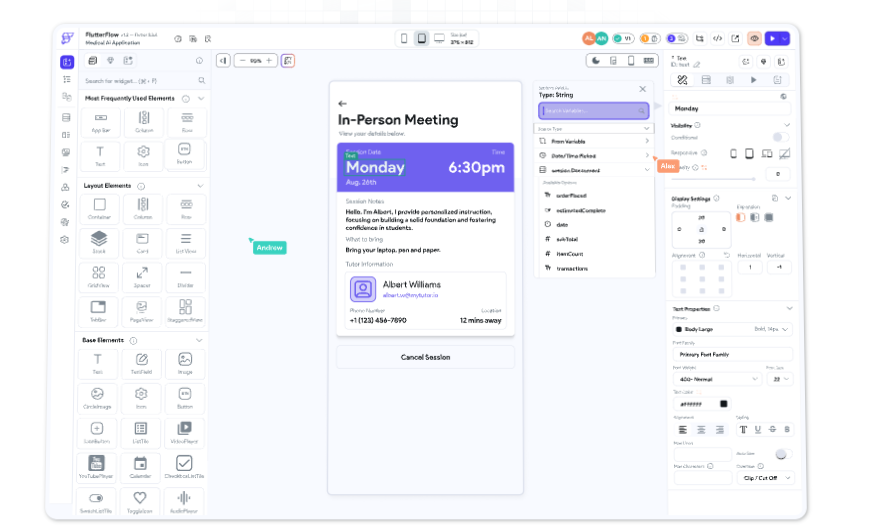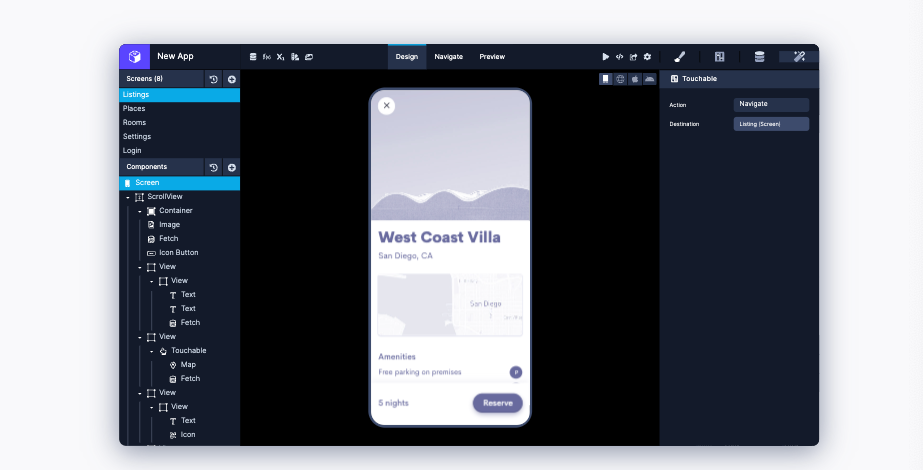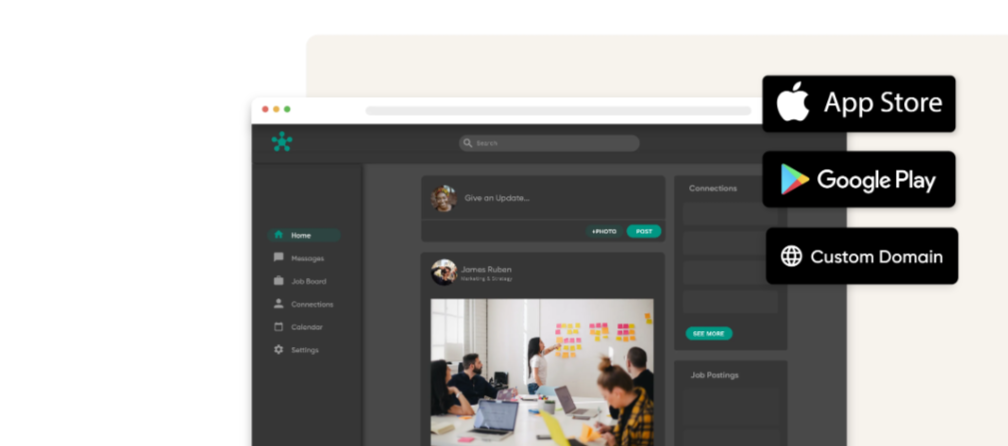Build Mobile and Web Apps Fast: 9 Leading Low-Code and No-Code Platforms
Are You Truly Ready to Put Your Mobile or Web App to the Test?
Don`t just assume your app works—ensure it`s flawless, secure, and user-friendly with expert testing. 🚀
Why Third-Party Testing is Essential for Your Application and Website?We are ready to test, evaluate and report your app, ERP system, or customer/ patients workflow
With a detailed report about all findings
Contact us nowTable of Content
In today’s digital world, the need for mobile apps is growing rapidly. Traditional app development can be time-consuming and resource-intensive, often requiring extensive coding knowledge.
Low-code and no-code platforms offer a solution by enabling quick app creation with minimal coding, using intuitive drag-and-drop tools and pre-built components.
Benefits of Using Low-Code and No-Code Platforms:
- Speed: These platforms reduce development time, allowing for fast prototyping and quicker launches. This helps businesses stay competitive and respond to market needs swiftly.
- Accessibility: These tools lower the technical barrier, enabling a broader range of people, from developers to entrepreneurs, to build apps. This encourages innovation and collaboration.
- Cost-Efficiency: By minimizing the need for extensive coding skills, development costs are reduced. Businesses can focus resources on other core activities while still producing quality apps.
- Flexibility: These platforms allow for easy adjustments and updates, ensuring apps can adapt to changing requirements quickly.
- Focus on Functionality: With coding simplified, users can concentrate on the app’s functionality and user experience, ensuring the final product meets user needs effectively.
This blog post will highlight nine leading low-code and no-code platforms that are transforming mobile app development. These tools simplify the development process, making it easier to build robust, scalable, and user-friendly mobile applications.
1. FlutterFlow

FlutterFlow is a low-code/no-code platform designed for building mobile applications. It leverages Google's Flutter framework, allowing users to create visually appealing and highly functional apps without extensive coding knowledge.
FlutterFlow is ideal for developers and non-developers alike, offering an intuitive drag-and-drop interface and pre-built components to accelerate the app development process.
Features
- Drag-and-drop support
- Deep Flutter integration
- Comes with built-in Google Firebase support
- Cross-platform support
- Responsive design
- Supports collaboration
2. Draftbit

Draftbit is a low-code and no-code platform focused on mobile app development. It allows users to design, build, and deploy mobile applications without deep programming skills.
Draftbit offers a visual interface (Visual builder) for creating app layouts and integrating functionalities, making it accessible for both developers and non-developers. It is designed to streamline the app development process, enabling rapid prototyping and deployment.
3. Adalo

Adalo is a no-code platform designed for building mobile and web applications. It empowers users to create fully functional apps without writing code, using an intuitive drag-and-drop interface.
Adalo is ideal for entrepreneurs, small businesses, and developers looking to quickly prototype and deploy applications. Its comprehensive set of tools and integrations simplifies the app development process, enabling users to focus on design and functionality.
4. Appery.io
Appery.io is a versatile low-code platform designed for building mobile, web, and progressive web applications. It combines a cloud-based rapid development environment with integrated backend services, offering tools for visual development, API integration, and responsive design. This makes Appery.io suitable for developers looking to accelerate app development without extensive coding, allowing them to quickly prototype, build, and deploy applications.
Appery.io Key features include a drag-and-drop editor for UI design, seamless integration with various APIs, and built-in backend services such as databases and server-side logic.
The platform supports cross-platform development, enabling users to create apps for iOS, Android, and web from a single codebase. Appery.io's comprehensive set of tools and ease of use make it a strong choice for businesses and developers aiming to streamline their development processes.
5. Bildr
Bildr is a no-code platform designed for creating web applications without programming skills. It offers a visual interface for designing and building apps, allowing users to drag and drop elements to create functional applications quickly. Bildr supports custom logic and dynamic data handling, making it versatile for various project needs.
Its features include integration with external APIs, real-time collaboration, and responsive design capabilities. It enables users to manage databases, set up user authentication, and deploy apps directly from the platform.
This makes Bildr suitable for startups, entrepreneurs, and businesses looking to develop web applications efficiently.
6. Bubble
Bubble is a no-code and low-code platform for building web and mobile apps without traditional programming.
It offers a visual interface where users can drag and drop elements to create interactive apps. Bubble supports complex workflows and custom logic, making it suitable for various projects.
Bubble enables quick development and iteration, allowing users to prototype and deploy apps rapidly. It includes features like user authentication, database management, and API integration, catering to both simple and complex app needs.
The platform’s community and documentation provide strong support for all users. Bubble’s scalability and customization options make it a preferred choice for startups, entrepreneurs, and businesses.
7. Glide
Glide is a platform for creating mobile apps from Google Sheets. It allows users to build apps by organizing data in spreadsheets and using drag-and-drop tools to design the app interface. Glide is ideal for quickly making simple, data-driven applications.
Glide is perfect for rapid app development due to its simplicity and user-friendly design process. It turns Google Sheets data into functional mobile apps, making it accessible for non-technical users.
Glide's real-time syncing with Google Sheets ensures that data updates instantly in the app. Its ease of use and low cost make Glide a great choice for individuals, small businesses, and organizations needing mobile apps quickly and affordably.
8. OutSystems
OutSystems is a low-code platform designed for building mobile and web applications. It provides a visual development environment that allows users to create, deploy, and manage apps quickly.
OutSystems is suitable for both simple and complex applications, offering extensive integration options and a scalable infrastructure.
OutSystems speeds up app development with its drag-and-drop interface, reducing the need for extensive coding. It supports integration with existing systems and databases, making it versatile for various business needs. The platform ensures high performance and security, suitable for enterprise-level applications.
OutSystems also provides tools for real-time updates and collaboration, enhancing productivity and reducing time-to-market. This makes it an excellent choice for businesses aiming to develop robust mobile apps efficiently.
9. Appian
Appian is a low-code platform designed to rapidly build mobile and web apps. It offers a visual development interface that simplifies the creation of applications, reducing the need for extensive coding.
Appian is equipped with process automation, case management, and integration capabilities, making it suitable for a variety of business needs.
Appian accelerates app development through its drag-and-drop interface and pre-built components. It supports robust process automation and easy integration with existing systems, enhancing efficiency.
The platform ensures scalability and security, ideal for enterprise applications. Appian's features enable quick deployment and real-time updates, making it a top choice for businesses seeking to develop mobile apps swiftly.











